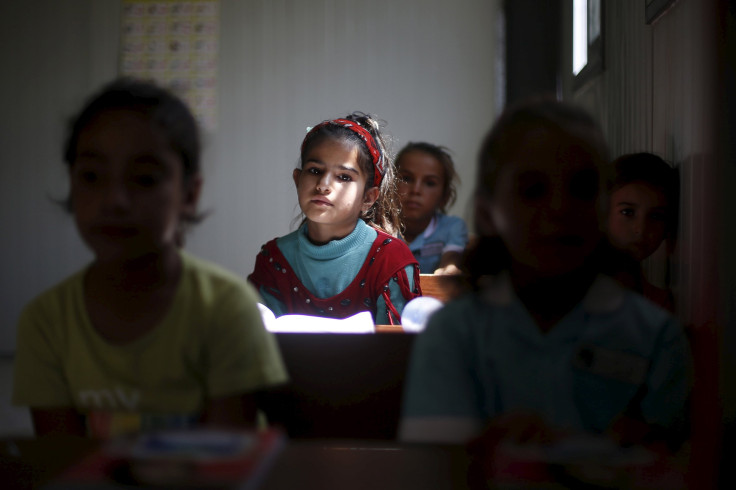Refugee Crisis 2015: In Jordan, More Than 100,000 Syrian Students Means Double Shifts For Some Schools

It was back to school this week for students in the Middle Eastern country of Jordan, in a scenario that served as yet another reminder of how the Syrian refugee crisis has left few countries untouched. Syrian students headed to class alongside their Jordanian peers, with some schools adopting new schedules or creating enormous class sizes to accommodate them, according to a senior government official.
More than 140,000 Syrian children were expected to attend Jordanian government schools, constituting 11 percent of all students in the country, Mohamed Al-Akour, secretary general of the Jordanian Ministry of Education, said, according to local news site Ammon News. That number included more than 25,000 children in refugee camps. Syrians attended school free of fees for books and other expenses, including uniforms, he said.
In order to accommodate Syrian students, 99 Jordanian schools held two waves of classes per day, a practice known as double shifting. Some classes, for Syrian children, numbered up to 85 students, Akour added.
Jordan is home to nearly 630,000 Syrian refugees who have registered with the United Nations refugee agency there, although the government has estimated that 1.3 million Syrians live in the country. Jordan's own population is roughly 6.5 million.
Even if they were crammed 85 to a class, Syrian children were lucky to be in school. The United Nations has warned for more than two years that Syrian children who have fled the civil war there, now in its fourth year, risk becoming part of what it calls a Lost Generation. "They are full of anger," Leila Zerrougui, the secretary general's special representative for children and armed conflict, said in 2013. "And if it continues, we will face a generation of illiterates."
More than 700,000 Syrian children who are refugees in Jordan, Lebanon and Turkey are unable to go to school because local schools do not have the capacity to absorb them, according to a report released Thursday by the United Nations Children's Fund, or Unicef. In January, a study by the United Nations refugee agency found that Syrian children's enrollment in Jordanian schools had risen from 44 percent in 2013 to 53 percent in 2014. But that still left nearly half of all Syrian refugee children out of school, with higher rates of enrollment in younger grades. The report also found that one in six Syrian refugees in Jordan lived in abject poverty.
Too little aid: 35% of Syrian refugees in #Jordan school-aged, yet nearly half are out of school. pic.twitter.com/1NmHFZBuSM
— Jan Egeland (@NRC_Egeland) July 25, 2015Throughout the Middle East and North Africa, more than 13 million children are unable to attend school as a result of violence and turmoil, the Unicef report added. In Syria, Iraq, Yemen and Libya, a combined nearly 9,000 schools have been damaged or destroyed, or repurposed as shelters, for civilians or militants.
For some Syrian families in Jordan, schooling is a luxury. The World Food Program, which has provided refugee families with coupons for food, has slashed in half that assistance to Syrians in recent months. In September, more than 200,000 refugees were told that because of a shortage of donations, the WFP had been forced to cut food vouchers further.
For another 211,000 #Syrian @refugees in #jordan they got this SMS frm @WFP. How to survive on close to 50 cents/day? pic.twitter.com/2rLjPATrkP
— Andrew Harper (@And_Harper) September 2, 2015Syrian refugees are not legally allowed to work in Jordan, but children can slip under the radar more easily than their parents. As a result, young Syrians often take up the mantle of becoming their family's breadwinners, forgoing school in the process.
© Copyright IBTimes 2024. All rights reserved.






















